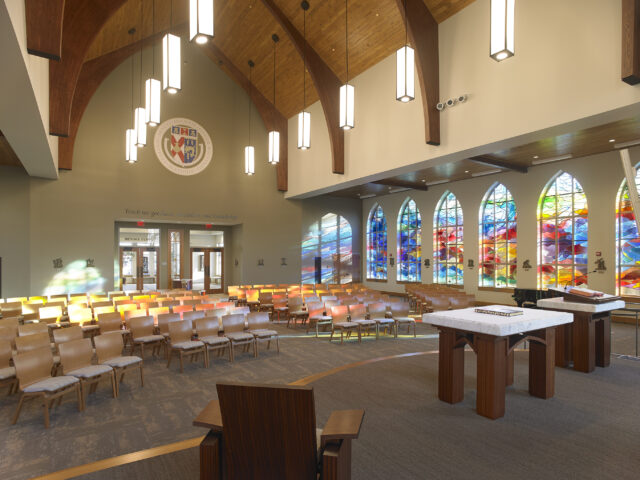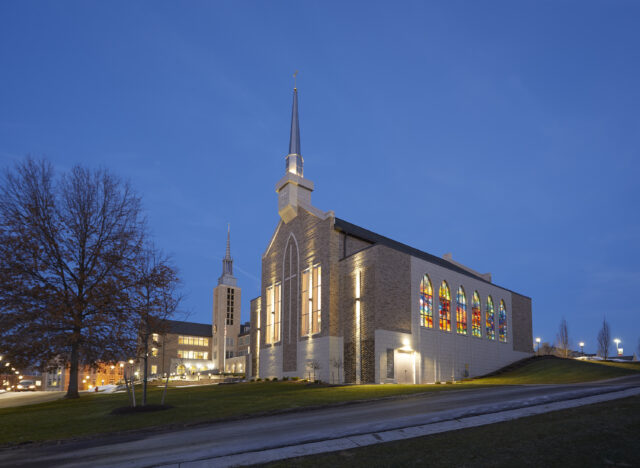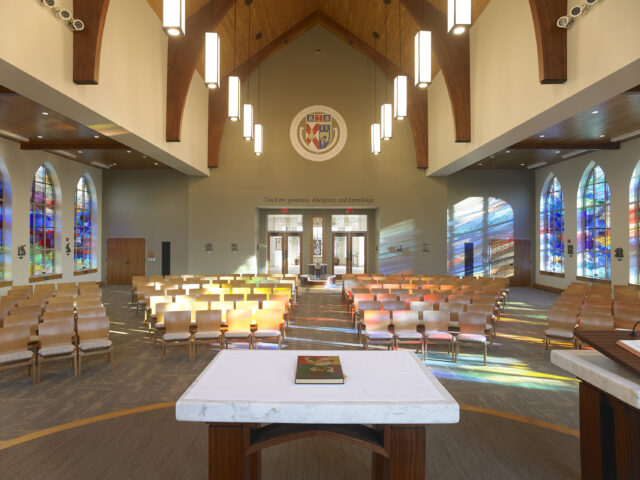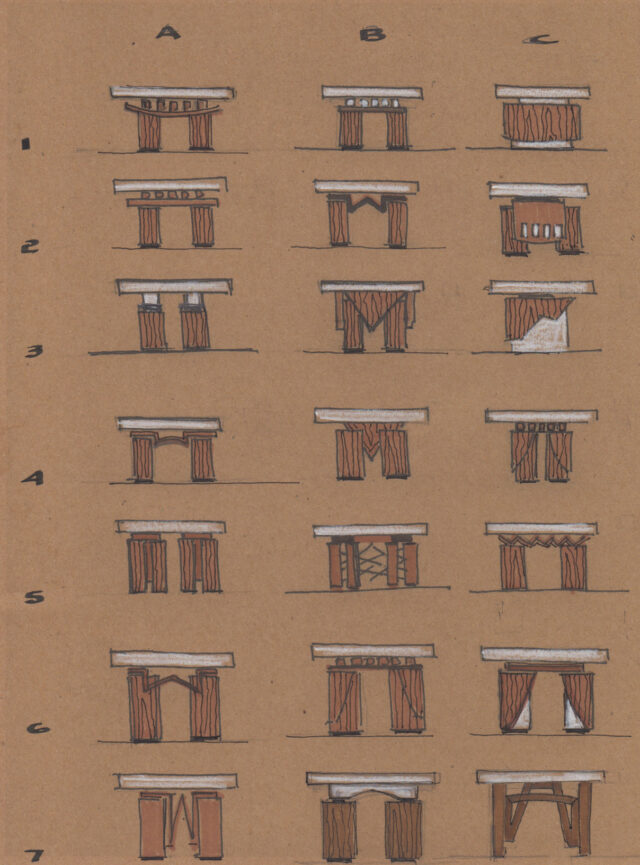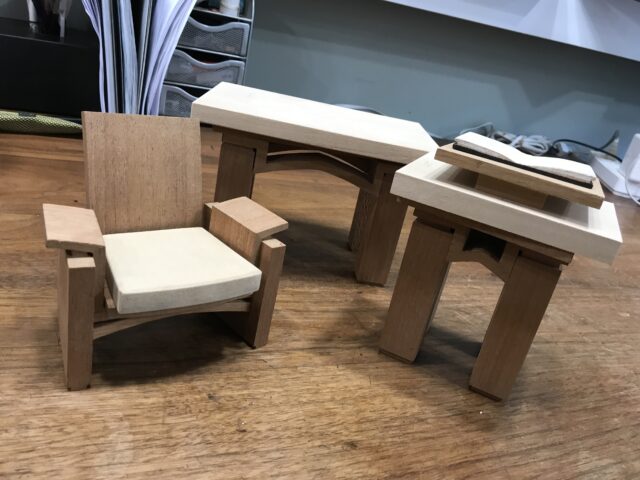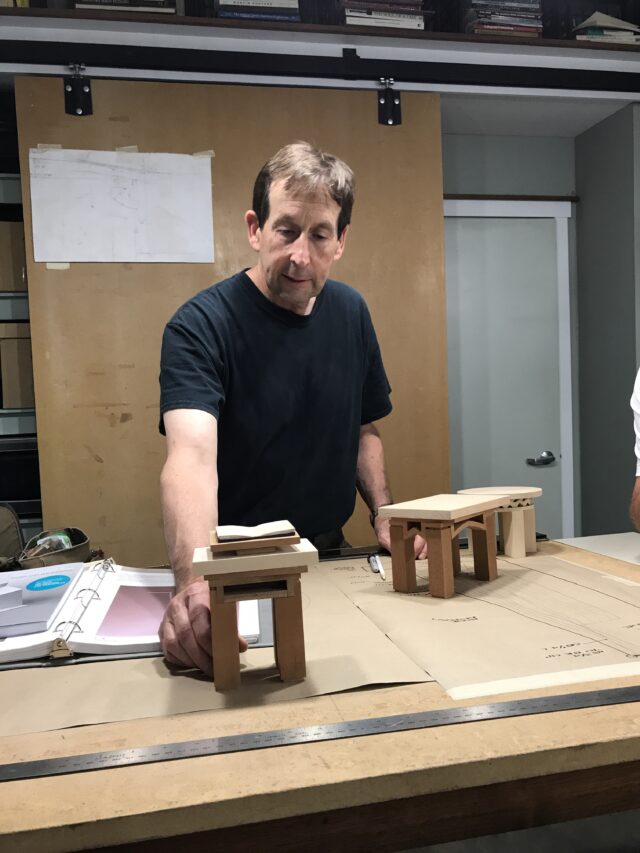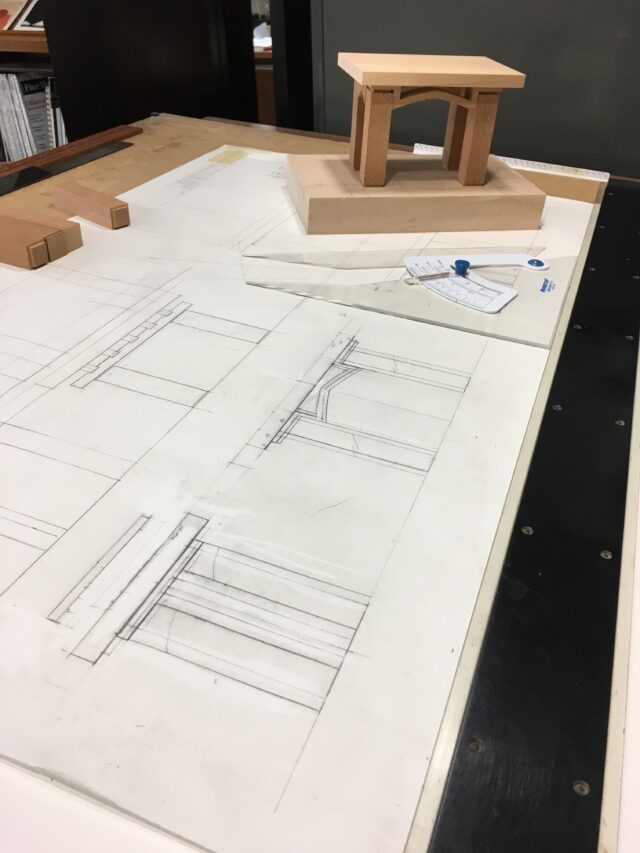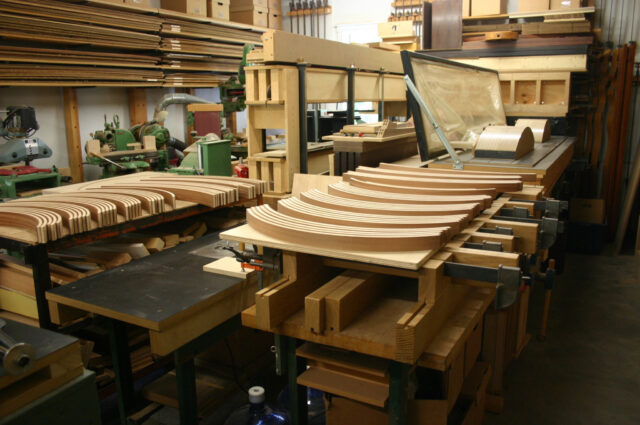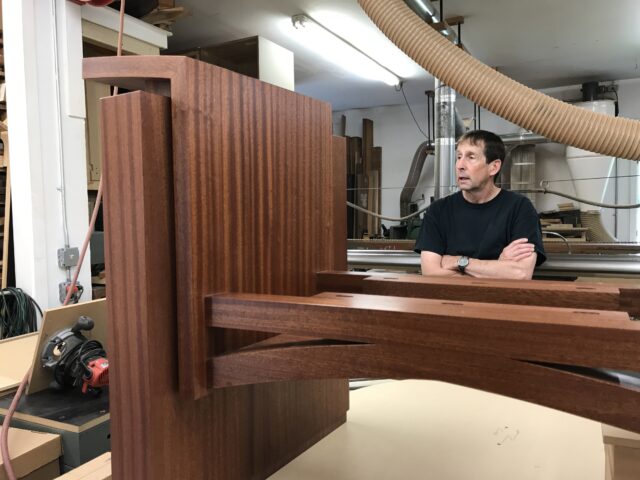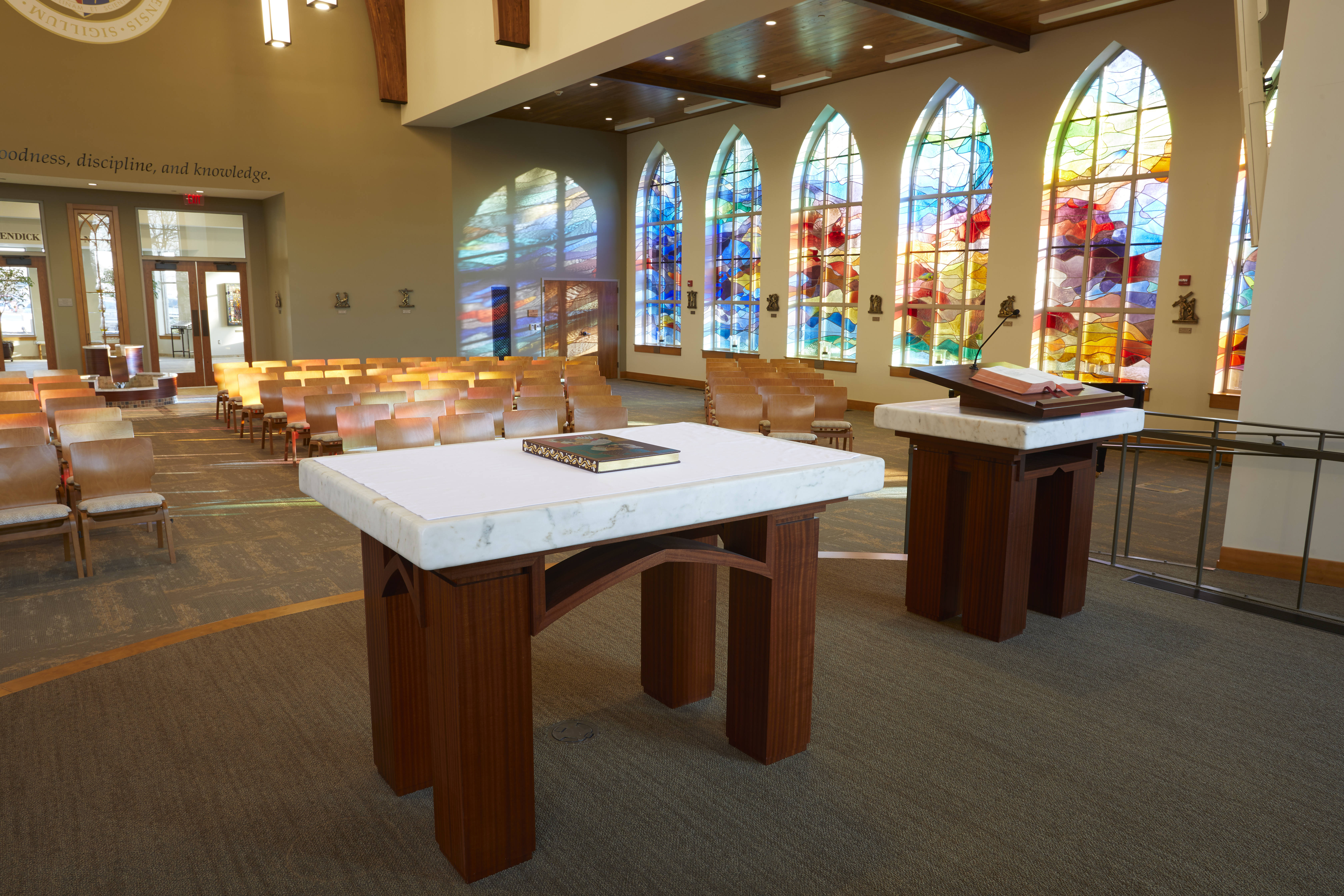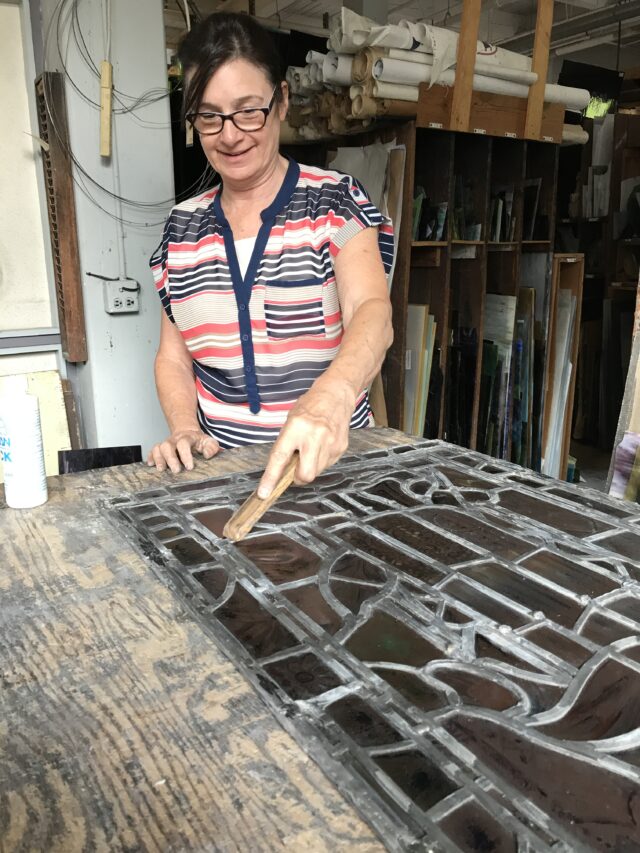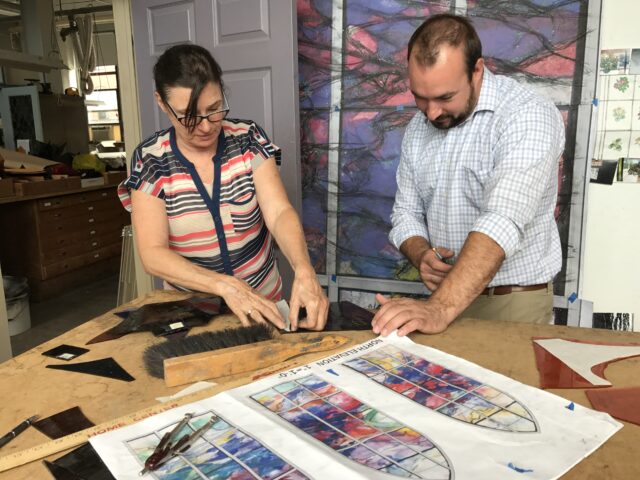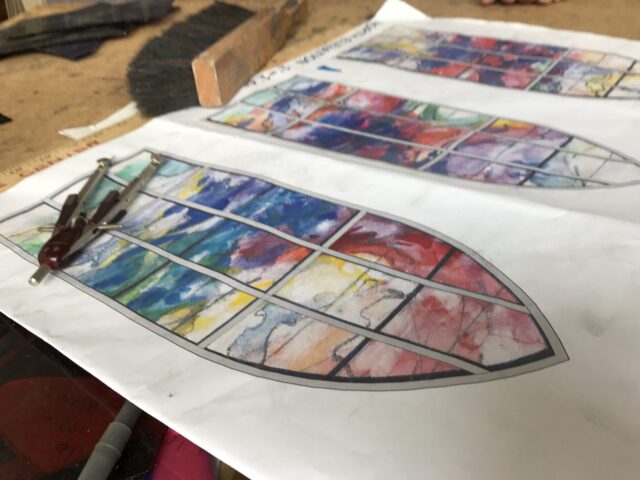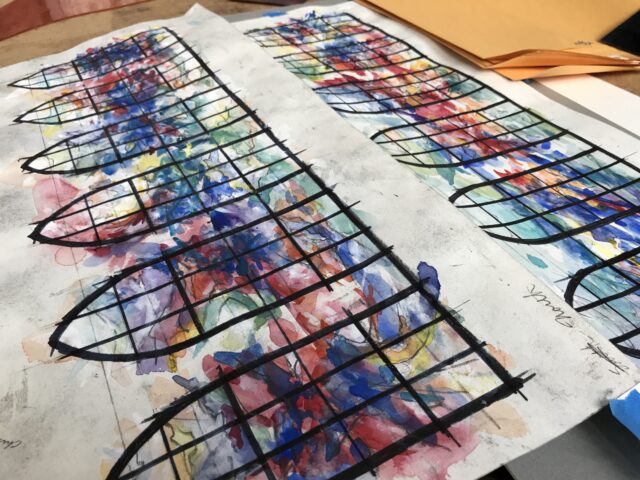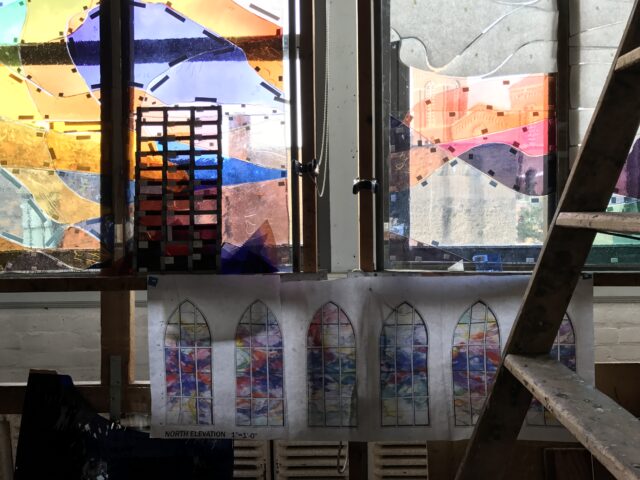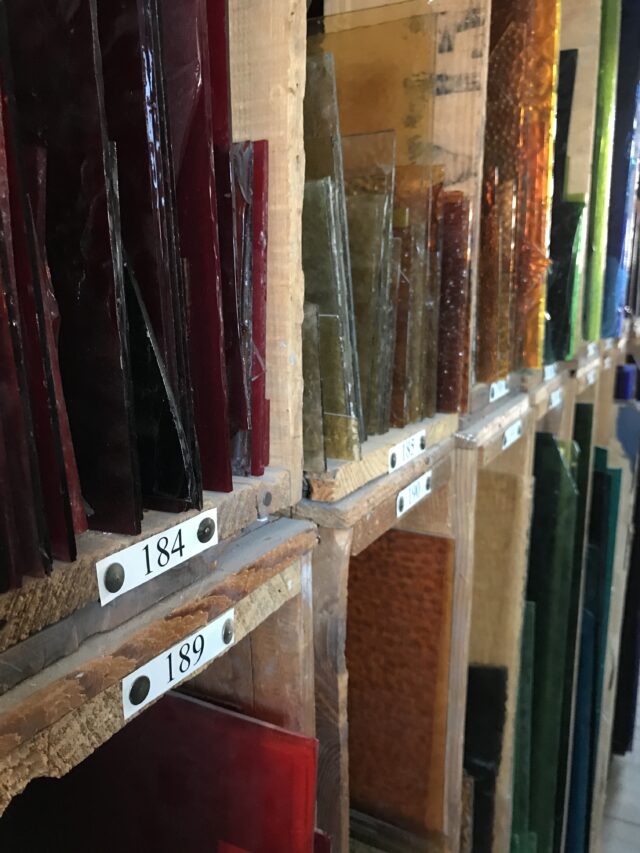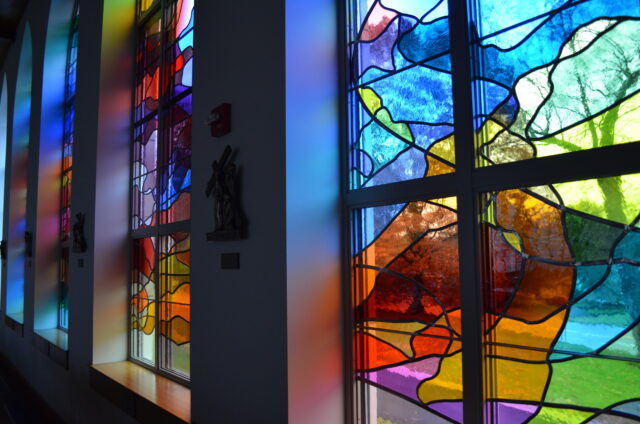The Art of Architecture: Collaborating With Artisans on the Hermance Family Chapel of St. Basil the Great
Our Collaboration With Furniture Designer John Dodd
John Dodd is a designer, educator, craftsman, and really nice guy. For more than 35 years, he has been in the business of crafting custom furniture, typically using wood but often incorporating concrete, metal, and glass. A creative in every capacity, he even designed his own home. He typically makes custom pieces for private residences, universities, outdoor environments, and when he has time, “speculative” work for shows and galleries. Due to the tedious nature of his process and the care he takes, he does not produce many pieces each year. We are very lucky to have worked with John on multiple religious projects at LaBella.
John’s inspiration for the Chapel, as with much of his work, was derived from the space itself, and from nature. In his words, the pieces are not “loud,” but rather strategically play off of the grand glulam beams and arched windows. The dimensions, as in any piece, were critical (to avoid becoming clumsy or awkward) but John also considered the proportions within the overall space.
John’s process is truly unique and was much appreciated and admired by the client and the architectural team. In our early meetings, he presented sketches of numerous options and let conversations with the client and architect guide the design. John describes this as a “divergent ideation process,” where he can present a broad spectrum of ideas and find out what the client does and does not like.
After combining features and creating refined options, John presented another round of more detailed sketches, which he followed up with scaled wood models, so we could appreciate every face and angle. As with an architectural rendering, this gave the client a more comprehensive understanding than a drawing. Additionally, this allowed him to work out his actual assembly methods.
The altar, ambo, and presider’s chair are crafted of African sapele wood, which has naturally occurring gold highlights. John suggested that this species would be beautifully suited for a religious atmosphere. This same wood is used to highlight other important features, including the shelves that hold the Book of the Gospels and Tabernacle, and textured banding that clads the baptismal font.
The centerpieces of the sanctuary, the altar and ambo, are each topped with marble that was salvaged from an inherited altar. John skillfully accounted for the weight, wiring, and assembly of these pieces, considering that once assembled, they would be very difficult to move. The marble topping the altar and ambo could not appear “precarious,” but an overbuilt base was also to be avoided. The resulting design was a perfect balance.
The large, suspended crucifix, the focal point of the Chapel, is crafted of sapele – but holds a secret. Within its core is oak from the tree that once resided on the site. John took care to ensure that the wood was kiln-dried before installing it in such a way that it would remain isolated, should it grow or shrink with age. It was important to the University to preserve this history.
While he admits that project timelines often present a hurdle, the greatest challenge he faces is the sourcing of wood. For a small operation such as his, finding high quality hardwoods can be tricky. As the years have gone by, there is less to be found, and the price has increased. He sources from Canada to Pennsylvania, and always travels to see the wood in person to weed out problematic grains, knots, and defects.
While visiting John’s workshop, I was blown away by the variety of methods necessary to achieve an end. While his craftsmanship is evident, the process is not always appreciated. I was wowed by a demonstration in vacuum-forming and a variety of hand-fabricated jigs. But that’s what makes John’s work different than something “off-the-shelf from Ikea.”
Images from the design of the altar, ambo, and presider’s chair with John Dodd
Our Collaboration With Stained Glass Artist Valerie O’Hara
Stained glass has been in Valerie O’Hara’s family since Pike Stained Glass Studios opened in 1908. At the age of 12, she began apprenticing in the studio in addition to her studies. The family legacy is almost unheard of, some local churches have work represented by all three generations. Because stained glass manifests in many forms and styles, Valerie possesses the knowledge to design anything from windows to skylights and from gothic to contemporary.
The Chapel’s design called for 12 massive stained glass windows bordering the Nave, each 12 feet tall and 6 feet wide. LaBella’s architectural team provided Valerie with the dimensions and some concepts of the Chapel’s interior to give her an idea of the relative scale and prominence.
The first step in her process was to develop a watercolor – a scaled representation of the color and pattern the final form would take. By holding it up to a window in client meetings, we began to see how the design would come to life. After a few iterations of color combinations, the design committee – comprised of LaBella designers and representatives from the college – agreed on the final scheme.
After the design was finalized, Valerie printed two full-size color copies of the watercolor drawing. One copy was preserved for reference, while the other was cut into templates for each piece of glass. Each of the 12 windows contains an astounding 2,700 pieces.
She then assigned each piece a color from her inventory of imported glass. Once cut, the pieces were adhered to clear plate glass in their respective positions. This step is used to observe the juxtaposition of colors prior to assembly. Strips of lead were molded by hand to cradle each curve, and soldered at every intersection to secure it in place. A critical final step was the addition of horizontal steel rebar, which provides intermediate support for the weight of the glass.
Valerie’s studio is a feast for the eyes. Sketches, partially-assembled windows, and sheets of imported glass of every color, shape, and style cover every surface. It seems a fitting profession for a woman with such an exuberant personality. Seeing the light cast through the installed windows for the first time was truly breathtaking. The sweeping color brings every corner of the Chapel to life. With the sun low in the winter sky, the entire congregation was aglow.
“The design has a balance of areas of intense line and color and areas of calm. The intense areas attract the eye, making it linger over those areas that represent the Works of Mercy. The lighter areas allow the eye and mind to rest. Each side of the chapel windows was used as a whole “canvas”, sweeping the lines and colors across the openings to tie them together visually. On the north side of the nave, we used slightly more warm tones than on the south side, which received more sun. I was inspired by the committee’s choice of using abstract expression for the windows, which allows the congregation to see something different every time they enter the sanctuary.”Valerie O’Hara
Pike Stained Glass
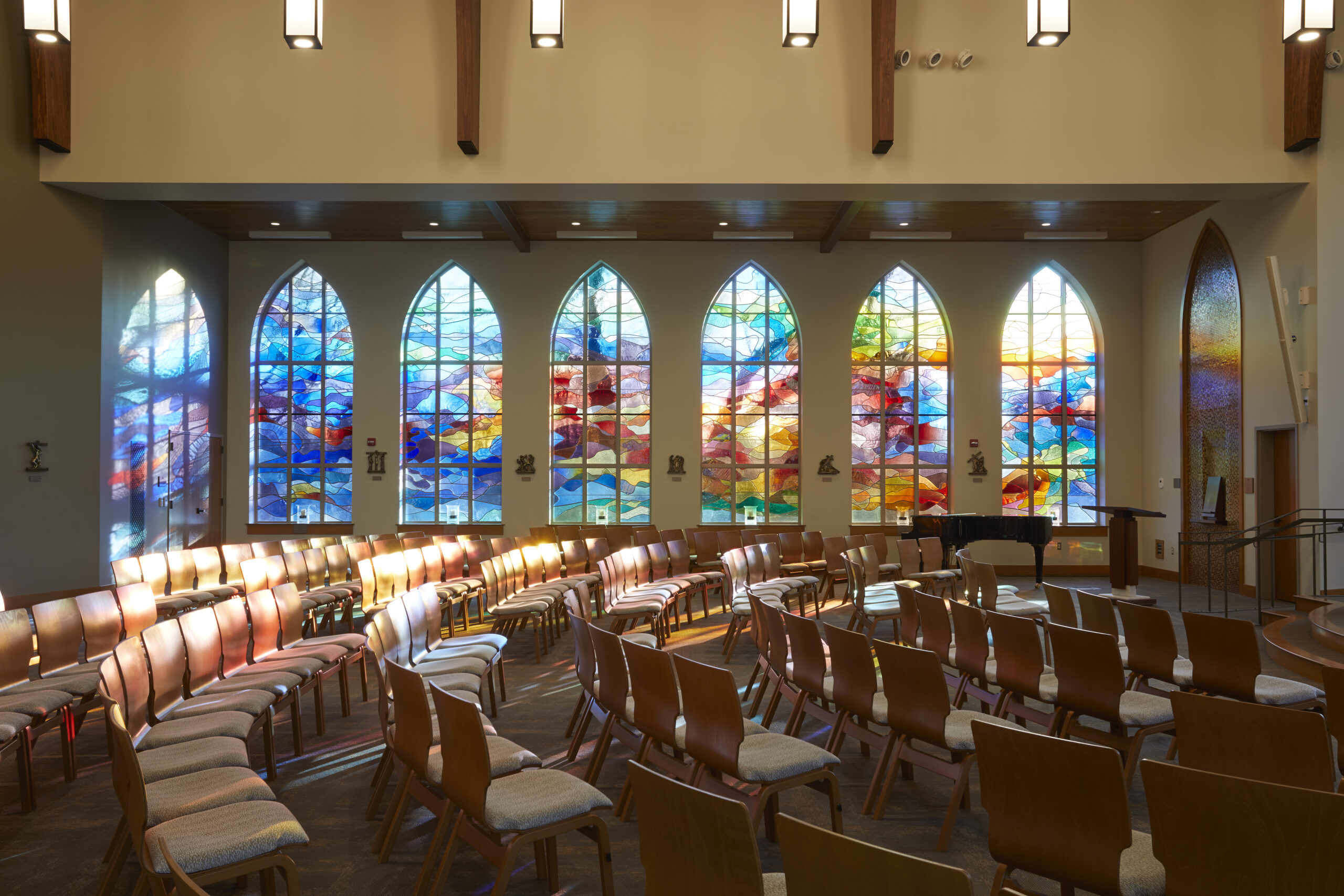
Valerie O’Hara Process Images
The Power of Partnership
Aside from their obvious talent, Valerie and John brought life and laughter to each meeting. Every moment spent with them was a learning opportunity. Reciprocally, they agreed that working alongside an architectural team was beneficial. It ensured that the project was aesthetically unified, and all design elements could evolve simultaneously, informing each other. Their own modesty cannot prevent the casual observer from recognizing the caliber of their work. The Chapel is just one chapter in their storied careers, and I highly encourage everyone to browse their websites to understand the true breadth of their mastery.
I feel very lucky to have worked with them both, and hope for future collaborations!
